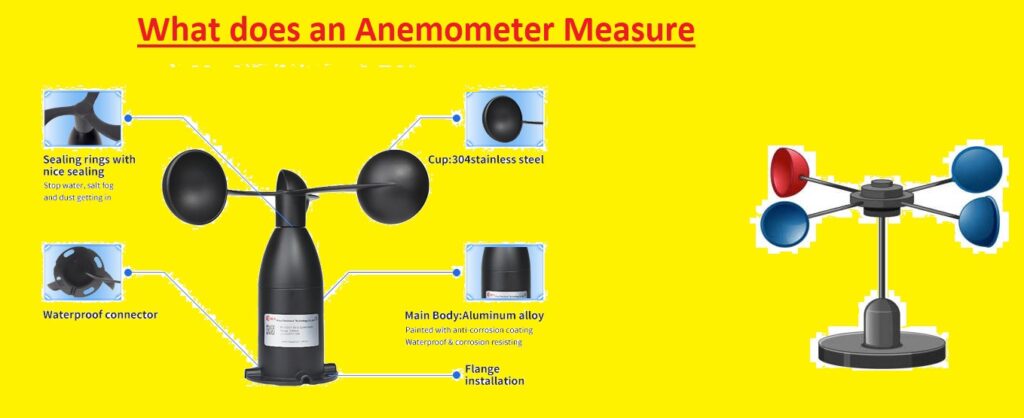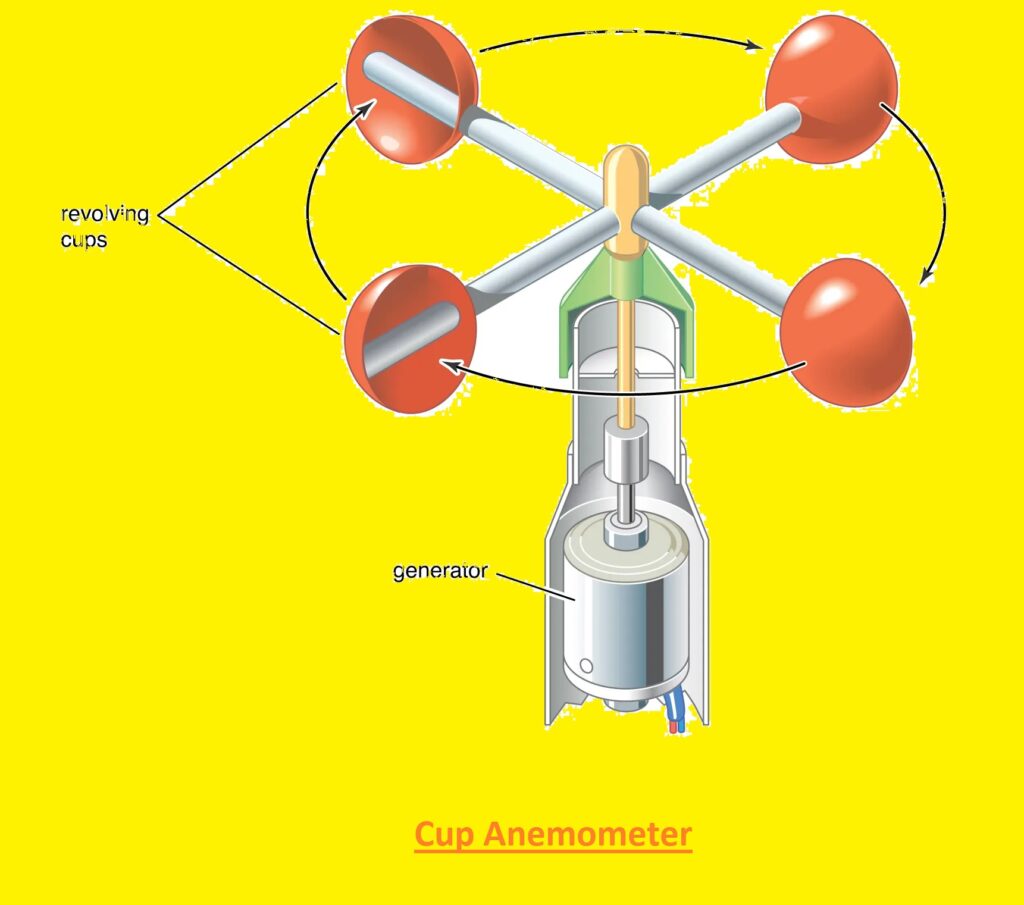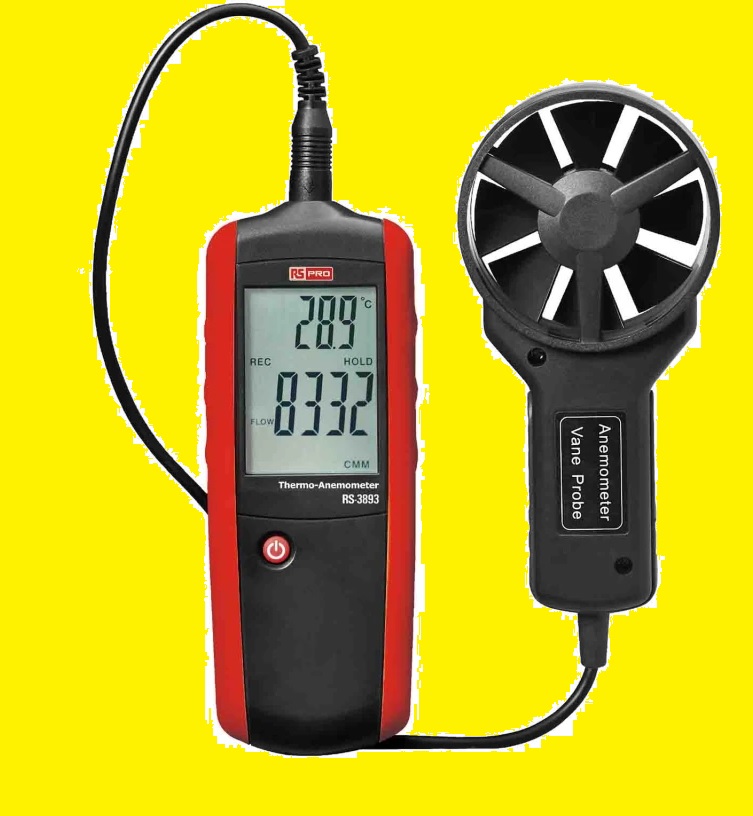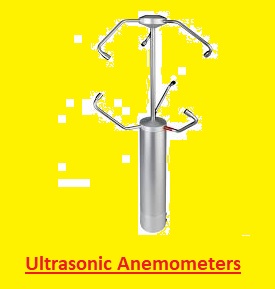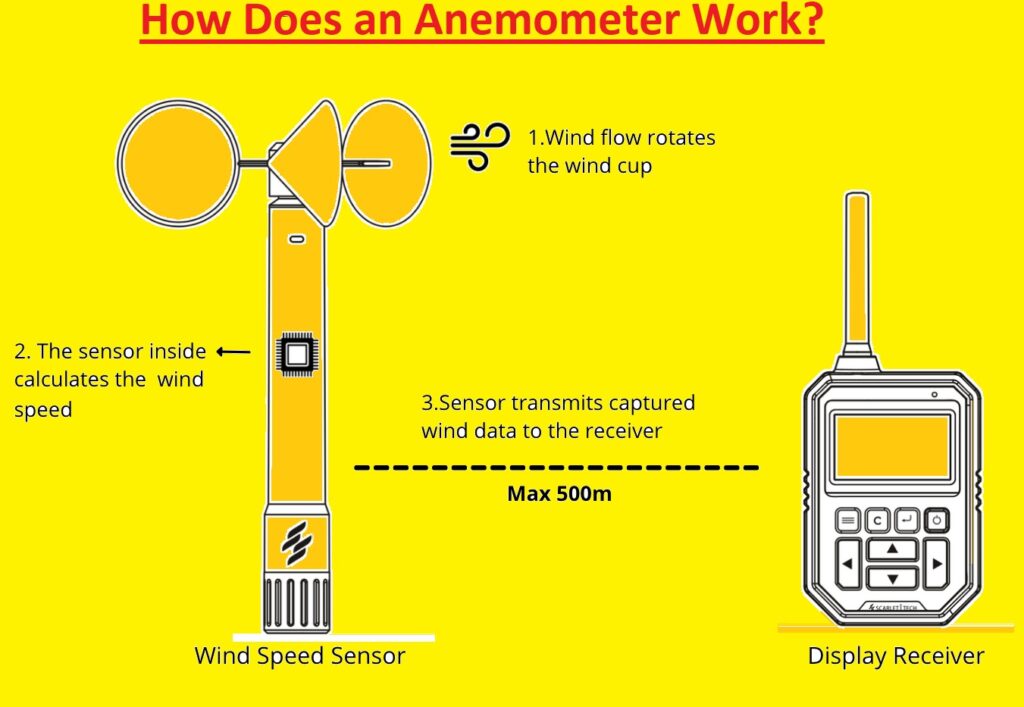Hi, guys welcome to the new post. In this post, we will learn What Does an Anemometer measures. Meteorologists use different techniques to measure wind speed. to measure the wind speed there are instruments used called an anemometer. In this post, we will discuss the anemometer and its related parameters. Let’s get started Introduction to Anemometer
Introduction to Anemometer
Wind is a naturally powerful force that affects different factors such as weather protection and renewable energy generation. To understand and harness wind engineers, and scientist working based on anemometers. These devices are made for measuring wind speed
What is an Anemometer?
The anemometer is a mechanical device that is used to measure the speed or velocity of air and gases. it can be in contained flow such as airflow in the duct or unconfined flow such as atmosphere wind.
For finding air velocity it can detect changes in the physical parameters of fluid. In some conditions, the effect of fluid on mechanical instruments is put in flow. The anemometer counted several rotations. It is also good for measuring wind speed. SOme time it is best to work for physicists, that study the way air moves.
It is used in weather stations. Since wind is moving air in motion it results in pressure difference. This conventional anemometer comes with 4 cups to find the speed of wind. Every of 4 is connected in horizontal arm So fast the wind cup will fastly spen in exits.
The speed measuring helps for forecasting the weather in hurricanes, storms, and tornadoes. For this point latest meter comes with certain features and also are pocket-size device. For measuring wind speed, take a meter externally and find wind speed. After that count the number of cup passes in front of you in 30 seconds. product it with two for getting revolutions or rotations per minute. So we find the RPM speed of the wind.
Importance of Measuring Wind Speed
Measuring the speed of wind is important due to finding conditions of weather, tracking storms, and other weather-related applications. With monitoring wind patterns it can be suggested that warnings for weather conditions and prevention measures can be taken
With that wind speed is important for the aviation industry. Wind speed data is used by pilots to ensure safe landings and takeoffs during flights. Wind speed also has the importance of pollution dispersion wind energy optimization
Types of Anemometers
The are three common types of anemometers;
- Ultrasonic anemometers;
- Cup anemometers;
- Vane anemometers;
1. Cup Anemometer
The cup anemometer is the oldest category of anemometer that is mostly used. It has 2 or 4 cups at horizontal exited arms which rotates in winds. The cup’s rotation is converted into wind speed measurement.
2. Vane Anemometer
Vane anemometers, also named wind vanes, just do not measure wind speed also used to find the direction of wind. it comes with horizontally configured arms having a fin or arrow at one end. The fin set alignment according to the direction of the wind, and the sensor get measures wind speed with the rotation of the arms
3. Hot Wire Anemometer
it uses a wire which is heated with current. When wind flows and crosses wire, it gets col down the changes in resistance is measured. These calculations are used to measure wind speed
Read also: What is Hot Wire Anemometer?
4. Ultrasonic Anemometer
This type of anemometer employs ultrasonic sound waves to measure wind speed and direction. it is the latest meter that comes with transducers that release and get ultrasonic signals. Through time analysis it get for sound was moved speed and direction of the wind is measured
How Does an Anemometer Work?
Anemometers’ working principles are according to their types. Cup anemometer uses the mechanical rotation of cups, vane anemometers are configured on fin movement, hot wire anemometers do measurements on the basis of electrical resistance, and ultrasonic meters calculate the time of ultrasonic sound wave propagation. Type it has all converts data taken into electrical signal, which can be seen in form of readings.
Factors Affecting Anemometer Accuracy
anemometers used for wind speed measurement different parameters have an effect on its accuracy. Such as Calibration, location sensor quality, and restriction in the airflow can casues faults in the readings.
read also Which AWG is Best for 60 Amp Breaker
Applications of Anemometers
- It is used for wind pressure measuring.
- It used for wind flow and wind direction
- It is also used in RC planes. it checks the conditions of the weather before checking devices.
- It is used for long-range shooters and pilots.
- Skydivers use it before leaping into the abyss.
- It is used in aerodynamics to measure the airspeed.
Tips for Using Anemometers
To get accurate measurements and reliable data, consider these tips when using an anemometer:
- Set mete at open areas where less restriction exists
- Do regular inspection and maintenance of the device
- Check that there is no damage in mete like at their cups
- During reading taking consider facts of humidity and temperatures
Who was the inventor of the anemometer?
The anemometer invented by Leon Battista Alberti
Who invented the way of measuring the wind speed?
John Thomas Romney Robinson invented the process to measure wind speed. it is the main component of weather monitoring and forecasting.
Which anemometers mostly found at weather stations?
The cup anemometer measured velocity in a plane perpendicular to the axis for rotation cups. It is used at weather stations. It is configured with shat at 90 degrees to horizontal, then it measures components of wind that is parallel to ground.
What is a Sonic anemometer?
Sound waves are good for finding the speed of wind. These wares are created to pass through the transducer. This process is used in the Sonic anemometer. it used in wind turbines and aircraft
What is Hotwire anemometer?
It has a thin wire that is heated at some temperatue higher than atmospheric temperature. Wire cools when air flows over the wire For measuring velocity we needed a relation between the resistance of the wire and wind velocity.
What is the basic principle of the anemometer?
What is the minimum speed of an anemometer?
What is the normal range of an anemometer?
What is the unit of the anemometer?
What is the best shape for an anemometer?
FAQS
Q1: Is an anemometer used to measure wind speed?
Yes, it used to measure the wind speed and pressure
Q2: What is the use of an anemometer and its unit of measurement?
it is used to measure the speed and velocity of the wind. Unit is meter per second and also used miles per hour, (km/h), or knots.
Q3: Which instrument is used for measuring wind speed?
The device used for measuring wind speed is called an anemometer.
Q4: How does an anemometer measure airflow?
A rotating vane anemometer measures airflow by measuring mechncal velocity. Airflows run over the propeller of the van anemometer resulting in rotational motion. The speed of rotation is transformed into airflow. This meter measures airflows from 1 m/s to 15 m/s
Q5: What is used to measure airflow?
A Hot Wire Anemometer is used to measure the velocity and direction of air by measuring the heat loss of an electrically heated wire configured in the airflow
Q6: How does an anemometer measure air velocity?
The rotating vane anemometer measures airflow with mechanical velocity. Airflow moves over the propeller of matter resulted in rotational motion. The speed of rotation is converted in airflow speed. The vane anemometer measures airflow from m/s to 15 m/s.
Q7: What is the unit of airflow measured by an anemometer?
The comonly used units are ft/min, m/s, MPH, km/h, and knots
Q8: What device measures velocity?
anemometers, speedometers, radar guns, pitot tubes, flowmeters, or Doppler radar systems measure velocity. Type of velocity helps to use the device
Q9: How to measure speed?
The formula for speed is distance divided by time.
Distance / Time, calculate speed in m/ sec.
- Speedometers: These measure the speed of a vehicle by using a rotating wheel or a radar gun.
- Stopwatches: They calculate the time it takes for an object to travel a certain distance.
- Anemometers: They measure the speed of wind by using different methods.
Q10: Is velocity used to measure speed?
Yes, velocity is used to measure speed. Velocity is a vector that has both direction and speed. Speed and velocity are interchangeably used in different applications to define the magnitude of the velocity vector.
Q11: How is the velocity of flow measured?
Anemometers, flowmeters, pitot tubes, Doppler ultrasound, and systems for measuring velocity using lasers are some methods and techniques.
Read our latest Electronic Guides:


